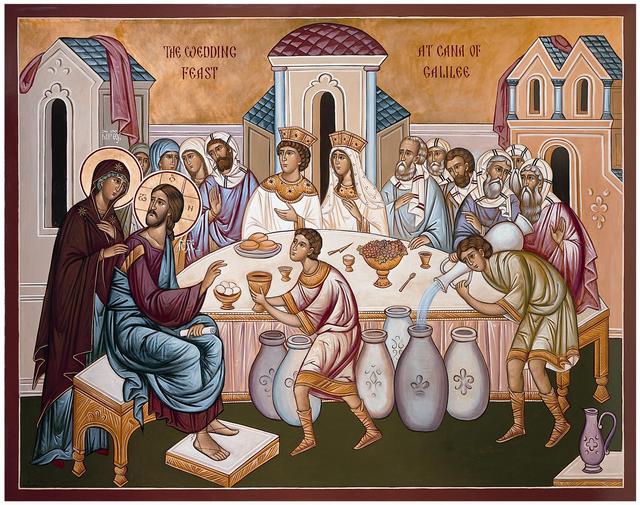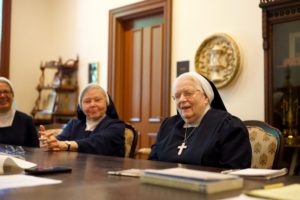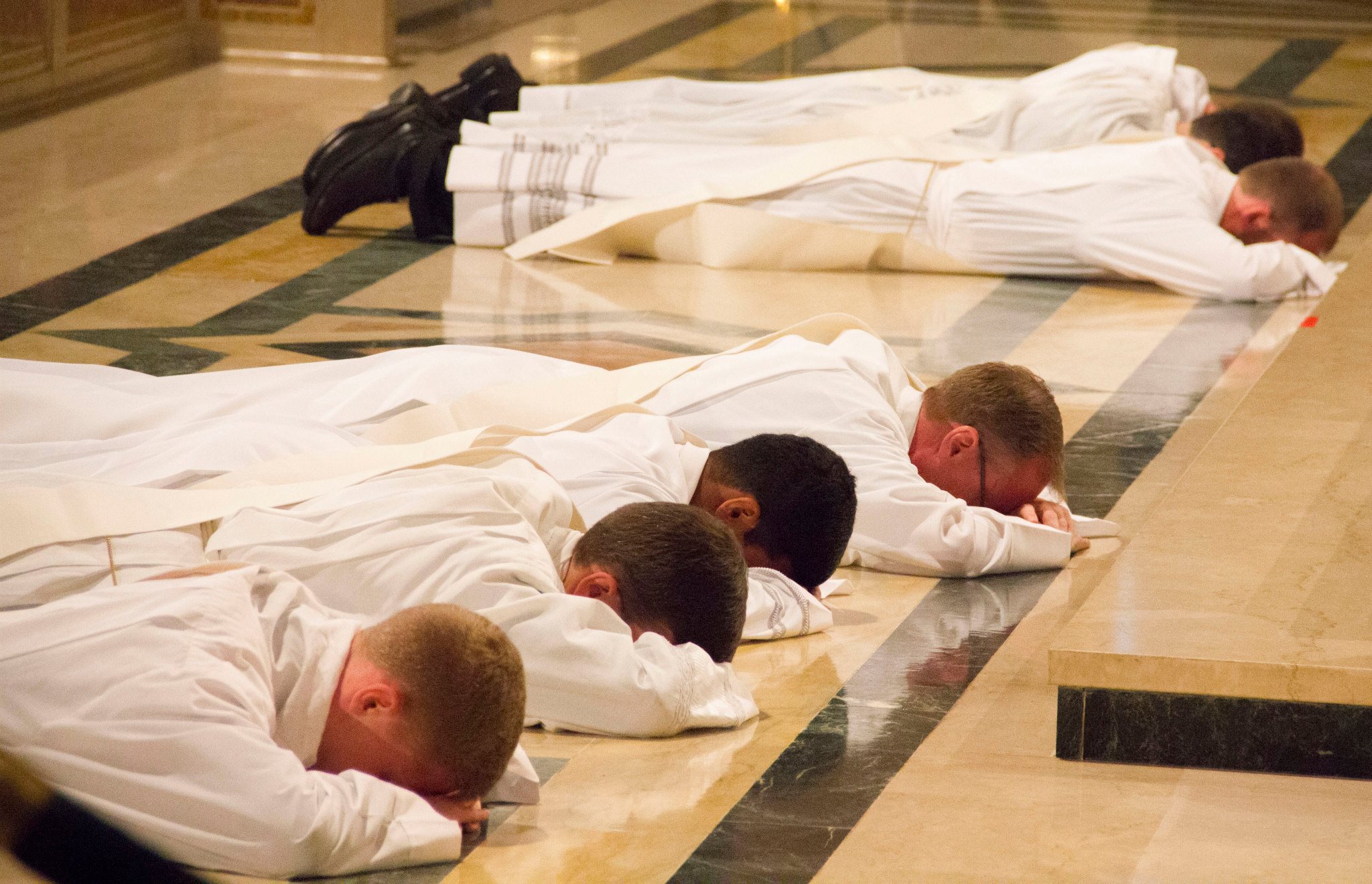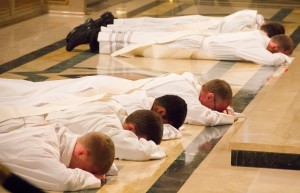The word family had a wider meaning in both Aramaic and Hebrew than it does in English today. The Hebrew ah and the Aramaic aha could be used to refer to those who were brothers, half-brothers, cousins, and even other near relations. Extended family networks were both insisted upon and essential for survival. To have these ties and be dependent upon them was every Jewish person’s duty.
Marriage – Of course, marriage is the heart of family. The very first order that God gave Adam and Eve was that a man should leave his father and mother cling to his wife, that the two of them should become one flesh, and that they should be fruitful and multiply. Ancient rabbis said that a man really wasn’t a man until he did so. However, especially by the time of Christ, there were some men and women who lived celibate lives so as to be particularly free to serve God, whether by studying the Torah, teaching, or engaging in some great work for God’s people. Paul seems to have been in this category. Jesus praised those who did so in Matthew 19 as did Paul in 1 Corinthians 7.
In the earliest years of Israel there was some tolerance for polygamy even though it was a departure from what God had set forth. Many overlooked it given the urgent need to grow the family of God, the chosen people. Men were often killed in war, leading to an abundance of women who needed husbands. Generally, only wealthier men could afford to have more than one wife. Although the Bible does not explicitly condemn polygamists, it does show that polygamy led to intractable troubles, sometimes between the women but more often between the sons over inheritance rights. By the time of Jesus, polygamy among the Jews had greatly decreased if not altogether vanished; there is simply no mention of it in the New Testament. Jesus summoned each man to love his wife and prohibited other Mosaic leniencies in marriage. He re-proposed God’s original plan of one man and one woman until death.
The call to marriage and engagement – Marriage took place at a very young age for the ancient Jews. Most rabbis proposed age 18 as most appropriate for men, though often a bit younger especially when war was less common. Young women married almost as soon as they were physically ready, generally around age 13 or 14.
In most cases, marriages were arranged by the parents. There were exceptions, however, and arranged marriages were seldom forced on young people who had absolutely no interest in each other. Nevertheless, the view in the ancient world, and even in many places today, was that marriage was more about survival than romantic feelings. Further, it was not merely the individuals who married; the families came together in mutual support. Beauty and romance, while considered pleasant things, were known to be passing; life and survival had to be based on sturdier foundations.
Once a future bride had been chosen for a young man, there followed a one-year period of betrothal. During this time the couple still lived apart while delicate, often-protracted negotiations occurred between the families, especially regarding the dowry. The groom or his family paid the dowry to the father of the bride in recognition of the loss incurred by the bride’s family as a result of her departure as a working member of the household. It was also understood that some money should be set aside for the woman in the event that her husband died prematurely.
Marriage ceremonies – After the period of betrothal was finished and all the agreements had been reached, the wedding could take place. Weddings typically extended over a period of five to seven days. Autumn was the best time for marriage because the harvest was in, the vintage over, minds were free, and hearts were at rest. It was a season when the evenings were cool, and it was comfortable to sit up late at night. Usually the entire village gathered for a wedding.
At the beginning of the wedding celebration, in the evening, the bridegroom, accompanied by his friends, went to fetch his betrothed from her father’s house. He would wear particularly splendid clothing and sometimes even a crown. A procession was formed under the direction of one of the bridegroom’s friends, who acted as the master of ceremonies and remained by his side throughout the rejoicing.
The beautifully dressed bride was carried in a litter and in procession. Along the way people sang traditional wedding songs largely drawn from the Song of Songs in the Bible: Who is this coming up from the wilderness like a column of smoke, perfumed with myrrh and incense made from all the spices of the merchant? (Song of Songs 3:6) When the procession reached the bridegroom’s house, his parents bestowed a traditional blessing, drawn from Scripture and other sources. After the prayers, the evening was passed in games and dancing, and the bridegroom took part in the festivities. The bride, however, withdrew with her bridesmaids and friends to another room.
The next day was the wedding feast and once again there was general rejoicing and a sort of holiday in the village. Toward the end of the day there was a meal at which the men and women were served separately. This was the time for the giving of presents. The bride, dressed in white, was surrounded by her bridesmaids, usually ten of them. She sat under a canopy while traditional songs and blessings were sung and recited. During this time, in the evening, the groom arrived. While the exact ritual words are not known, there seems to have been a dialogue between bride and groom. This is recorded in the Song of Songs. The bride says, Let him kiss me with the kisses of his mouth—for your love is more delightful than wine. Pleasing is the fragrance of your perfumes; your name is like perfume poured out. No wonder the young women love you! Take me away with you—let us hurry! Let the king bring me into his chambers (Song 1:2-4). The groom responds, Arise, come, my darling; my beautiful one, come with me. My dove in the clefts of the rock, in the hiding places on the mountainside, show me your face, let me hear your voice; for your voice is sweet, and your face is lovely (Song 2:13-14).
Now that the couple was together, all the other men and women also came together. It would seem that synagogue or other religious leaders imparted blessings to the couple, who were together under the canopy. The words of these blessings and rituals are not definitively known and seem to have varied. After these came the evening feast.
Later that first evening the couple would vanish to consummate the marriage. They did not go on a “honeymoon” but rather remained for the rest of the celebration, which often went on for several more days, sharing in the songs, dancing, and general merriment.
Below is a recording of Palestrina’s composition of Surge, Propera Amica Mea (Arise My Love). There is a wonderful musical onomatopoeia in the opening word, “surge,” as the notes run up the scale. Enjoy!
Cross-posted at the Catholic Standard: What Were Weddings Like in Jesus’ Day?






 The Lord is turning out some very good men. I remain impressed with the caliber, devotion and orthodoxy of the men who are in our seminaries. I recently preached a retreat for 30 of them at Blessed John Paul II here in DC. I also work with them in both summer assignments here in the parish and have at least three at a time working here throughout the academic year. They are prayerful and intelligent men who have a heart for the Church, and a love and reverence for God.
The Lord is turning out some very good men. I remain impressed with the caliber, devotion and orthodoxy of the men who are in our seminaries. I recently preached a retreat for 30 of them at Blessed John Paul II here in DC. I also work with them in both summer assignments here in the parish and have at least three at a time working here throughout the academic year. They are prayerful and intelligent men who have a heart for the Church, and a love and reverence for God.